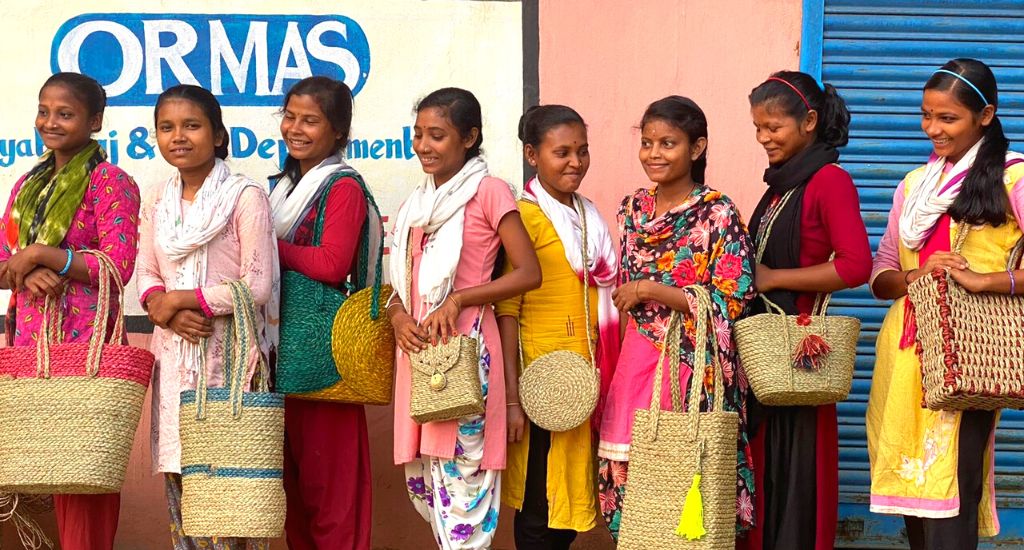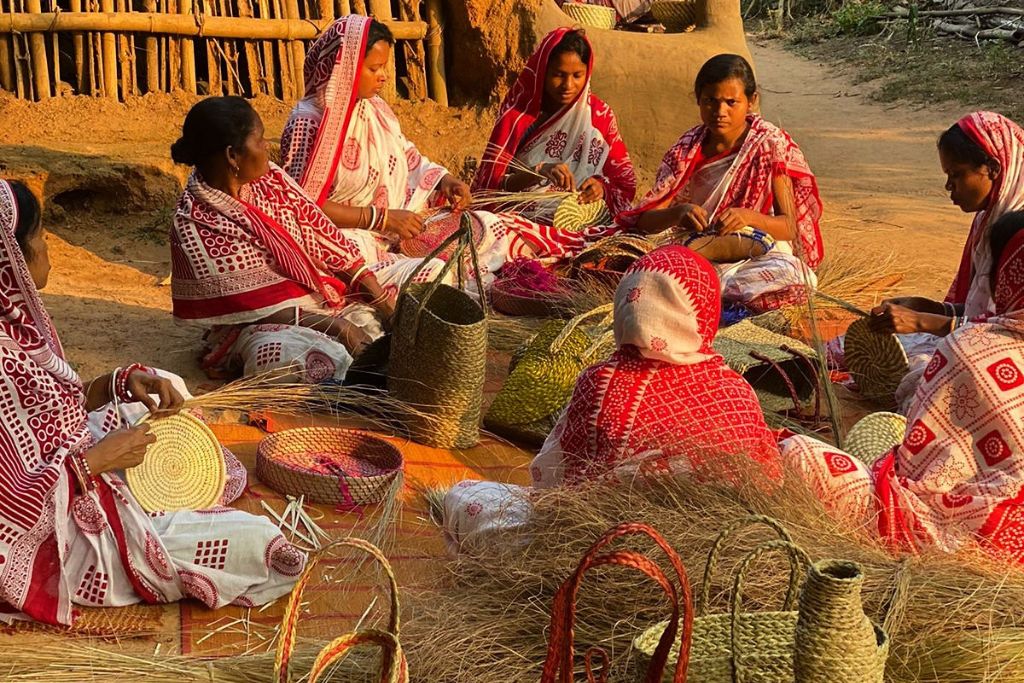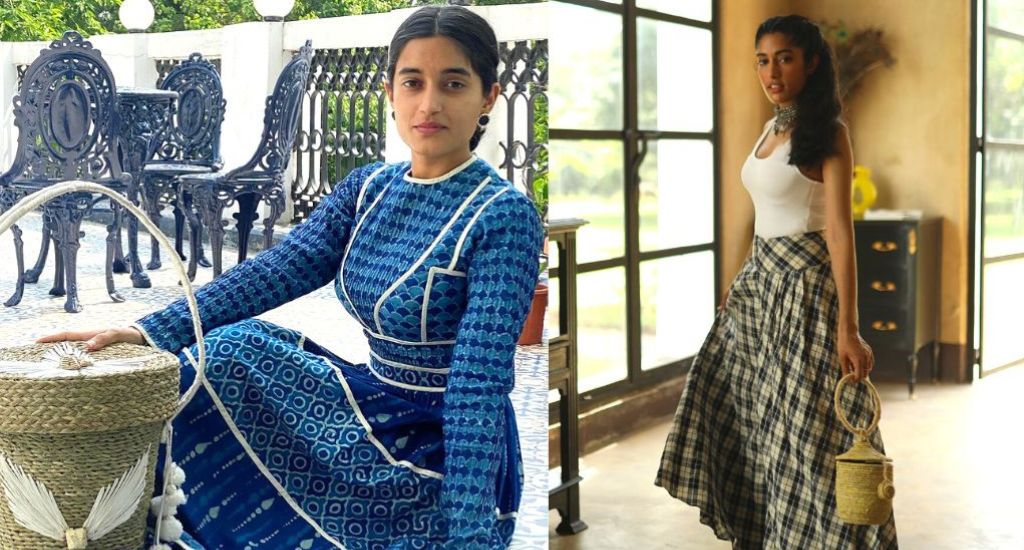
Odisha’s humble sabai grass makes fashion statement
Brought from Madagascar to Mayurbhanj long ago, sabai grass has been woven into baskets, bags and ropes used in WWII, but it is now a trending item in the high-end fashion boutique circuit.

Brought from Madagascar to Mayurbhanj long ago, sabai grass has been woven into baskets, bags and ropes used in WWII, but it is now a trending item in the high-end fashion boutique circuit.
The freshest style in handicrafts these days is fusion – mixing and melding together different styles.
But it is a balancing act finding the right amount of each form to fuse together.
This is what Akshita M Bhanj Deo has achieved – successfully integrating Odisha’s traditional dhokra (metal) art with sabai grass craft for her handicraft brand Hasa Atelier.
A blend of both luxuriates the décor at Akshita’s Belgadia Palace, a boutique heritage hotel in Baripada, the Mayurbhanj district headquarters. The styles come alive in accessories like bags, baskets and wall hangings.
At the heart of this is Usha Rani Naik and her self-help group that weaves magic with the humble sabai grass, turning it into ropes and then articles of decor. The 10-member group of women work and live in the Guhaldihi cluster that has 14 villages and is considered the epicenter for harvesting sabai – a wild, climate-resilient grass that needs little water and grows in the hilly, wooded areas of Mayurbhanj.
Naik is 43 now. When she started in 2011, she was 31. In the initial years rope was the only thing made of sabai known to the women.
Also Read| Ancient Mayurbhanj Chhau dance steps up revival
“Now Hasa has turned things around. Many women are approaching me and taking interest to work on sabai craft. Many groups have mushroomed,” Naik said.
Her average monthly income is Rs 20,000, though sometimes she faces a shortage of funds to buy the sabai grass for an order. She is not paid until the work is done, which can sometimes take 15 days.
“Several orders come through Hasa. Guests staying at the Belgadia Palace also buy directly from us. We can work in the comfort of our homes,” she adds.
The craftswomen also create innovative designs for bags and other accessories – inspired partly by Akshita’s family, the erstwhile royals of Mayurbhanj that has a collection of vintage clutch purses from the 1920s.
The family’s ties with sabai grass dates back a long time. It is said that Maharaja Sri Ram Chandra Bhanj Deo brought the grass from Madagascar during his tours and encouraged its cultivation as a cash crop in this tribal district.
The robust sabai ropes served in World War II as an alternative to coconut and jute ropes and a standard issue for Allied soldiers in the Asian theatre.
Returns from rope-making were meagre for a decade from 2001, when Usha Rani’s group was formed, till 2010. The women made just Rs 5 for each kg of sabai rope.

But their fortunes pivoted in 2011, riding a growing hunger for traditional craftsmanship that spawned a cultural experiment. Sabai products began selling in the range of Rs 700 and Rs 1,200 apiece. The women’s earnings soared.
At the core of this change was then Mayurbhanj district collector Rajesh Prabhakar Patil.
Also Read| Mayurbhanj villagers forced to ford river to reach schools, hospitals
He brought back this legacy craft through the Odisha Rural Development and Marketing Society (ORMAS) and contracted National Institute of Fashion Technology (NIFT) in Bhubaneswar and the National Institute of Design (NID) in Ahmedabad to give it a contemporary vibe.
Credit also goes to Akshita, director of Belgadia Palace, who took dhokra and sabai to an urban clientele through Hasa Atelier, launched in 2020. Hasa means earth in Santhali.
“When the pandemic happened, the women had surplus products. Though conversant with WhatsApp, they were not that tech savvy to carry out online retail. So my sister Mrinalika Bhanj Deo and I started Hasa to market the surplus,” she said.

Guests at Belgadia Palace were encouraged to visit the sabai craft clusters and make purchases directly from the craftswomen. The sisters would also introduce their own designs.
“One of the innovations was the use of metal dhokra handles in sabai bags. The women also added date leaves in some of their products,” Akshita said.
Hasa focuses on creating more designs to appeal to the urban crowd, though the women fix the prices.
Colourful Hasa mats can be had for a few hundred rupees, while bags and picnic baskets with Dhokra handles have a starting range of about Rs 2,000. Sabai loungers are priced at Rs 9,000.
“We see Hasa as a viable business option. Though we’ve asked the women not to copy our unique, customised designs,” she said.

Collaborations are also happening with resorts and boutique hotels in Goa.
The Guhaldihi cluster has 232 artisans, all thanks to Usha Rani and her group, Durgadevi, which made about Rs 50 lakh since 2011 and showed others the way. She has helped form 18 self-help groups with sabai products at the core. Many women now have export licences.
Also Read: Offbeat rural destinations in India
“It started in Guhaldihi, where 50 women received assistance in design development. There is a huge demand these days for eco-friendly products like sabai,” said Keshaw Chandra Jha, deputy chief executive officer of ORMAS in Sundargarh district.
In 2016-17 a women’s producer company was formed and it now has 1,000 artisan- members. A showroom, named Mayurshilpa, stocks sabai products in Baripada.
The lead image at the top shows women carrying grass-handicrafts as a new fashion statement in Odisha (Photo credits: Akshita M Bhanj Deo/Hasa Atelier).
Deepanwita is a journalist based in New Delhi. An alumna of Asian College of Journalism, she writes about rural development, gender and climate change.